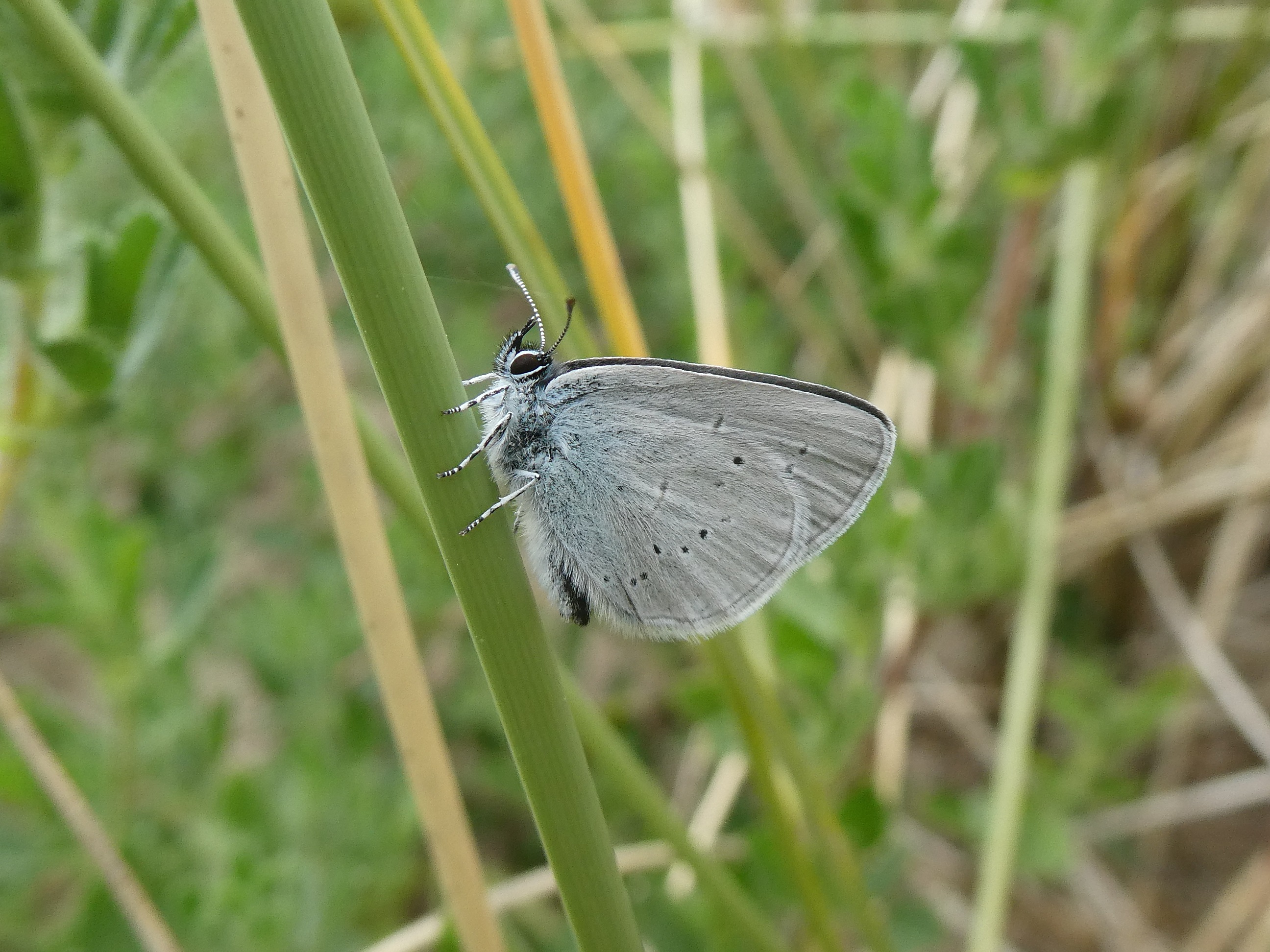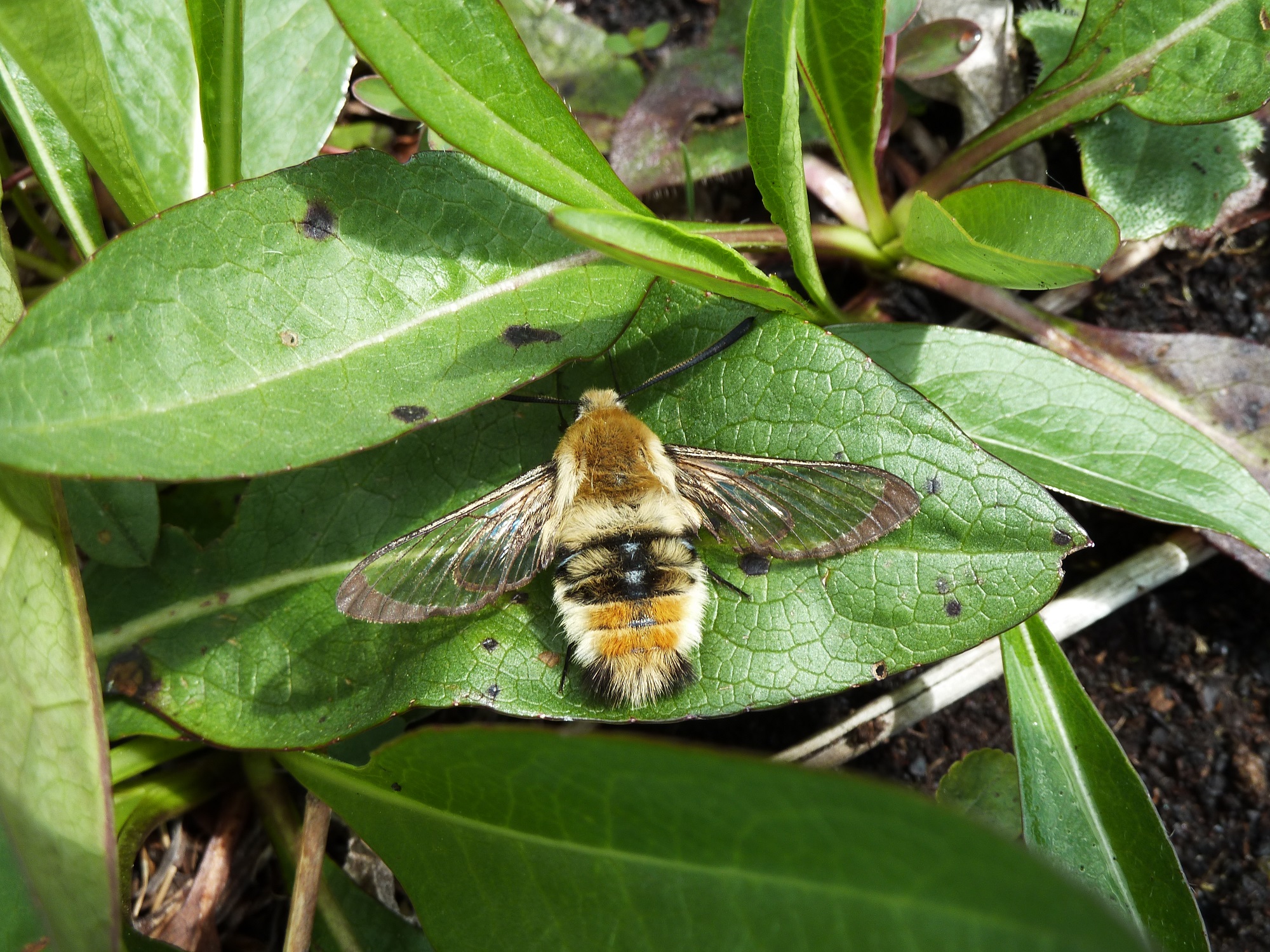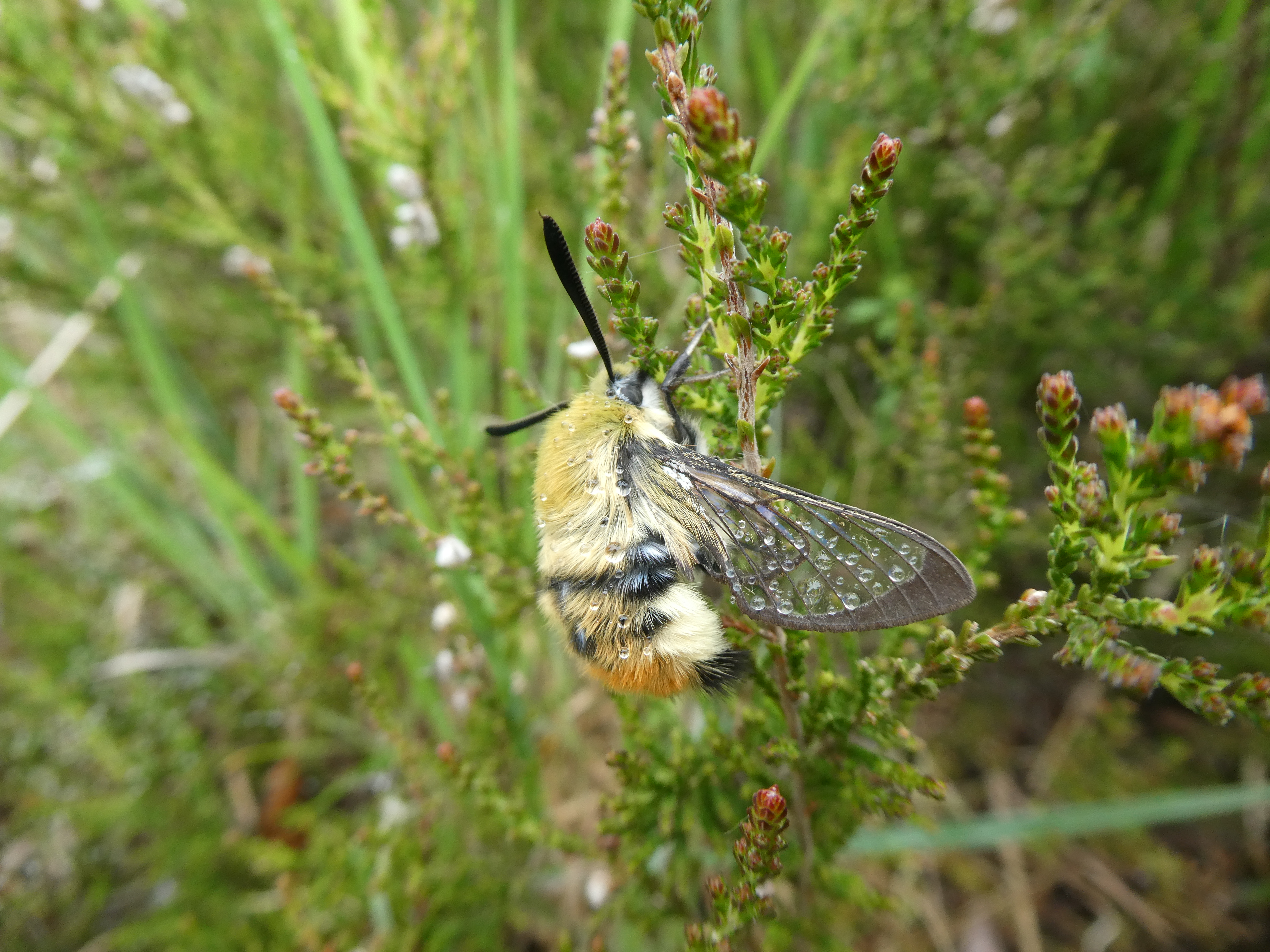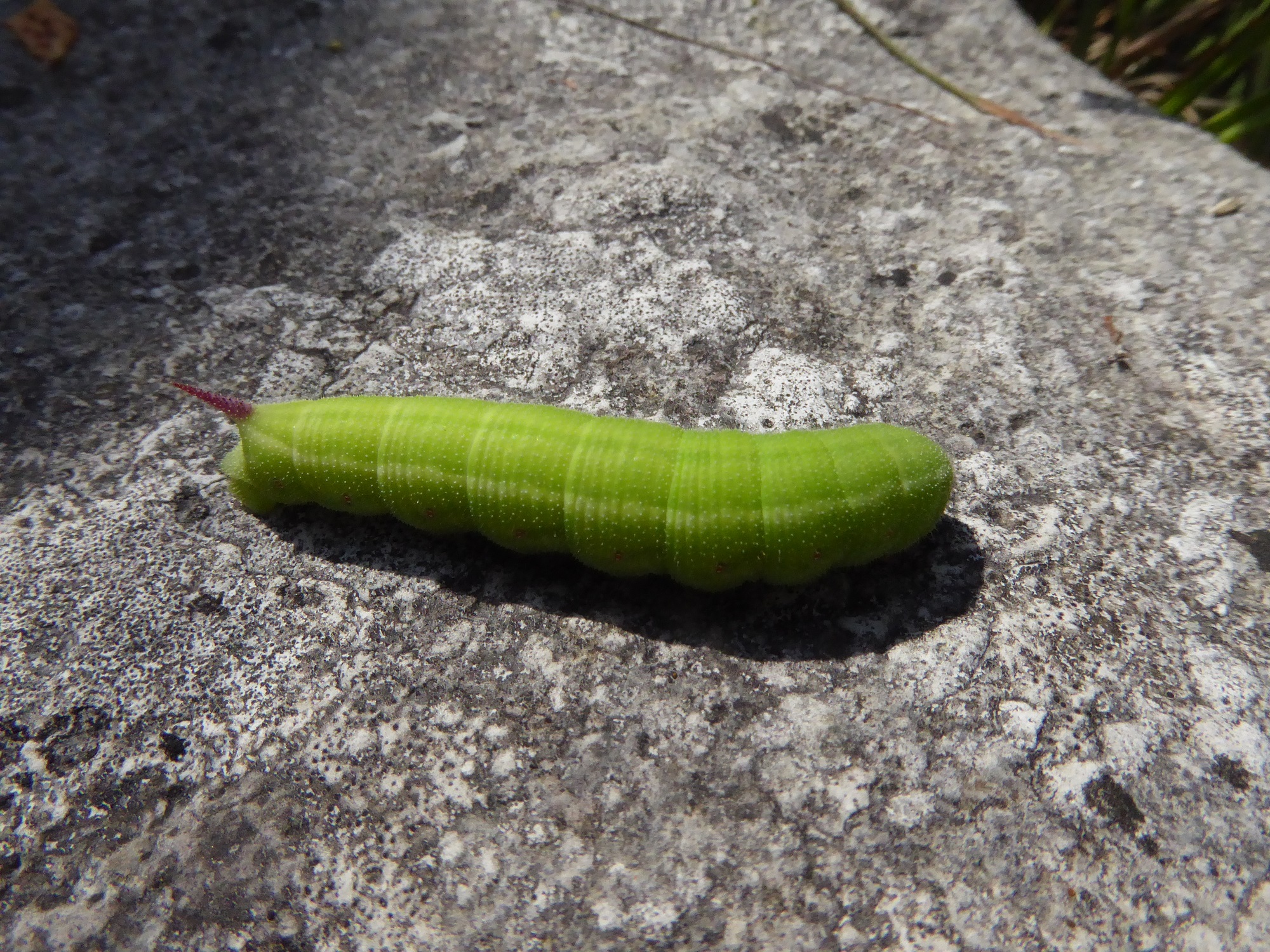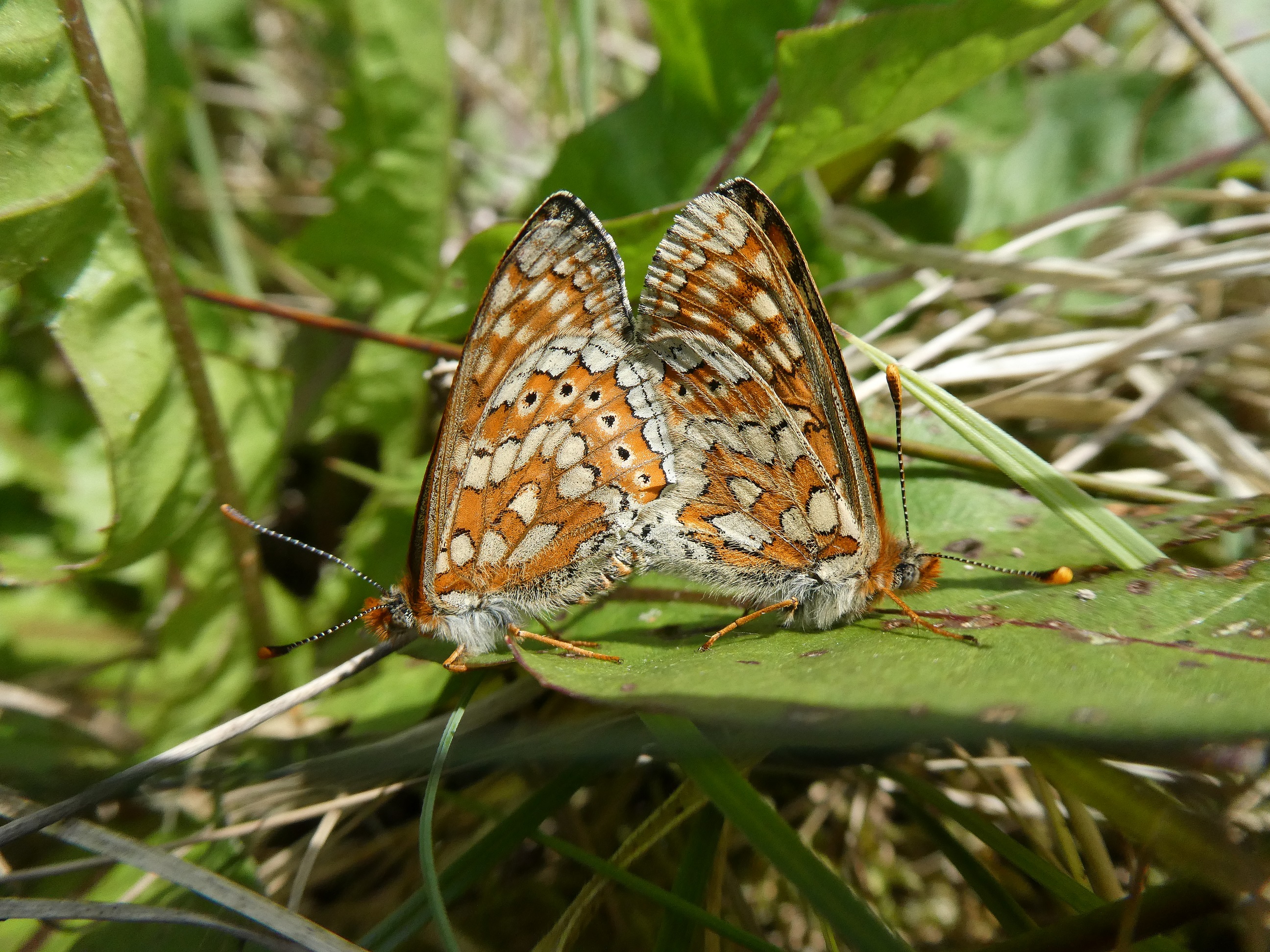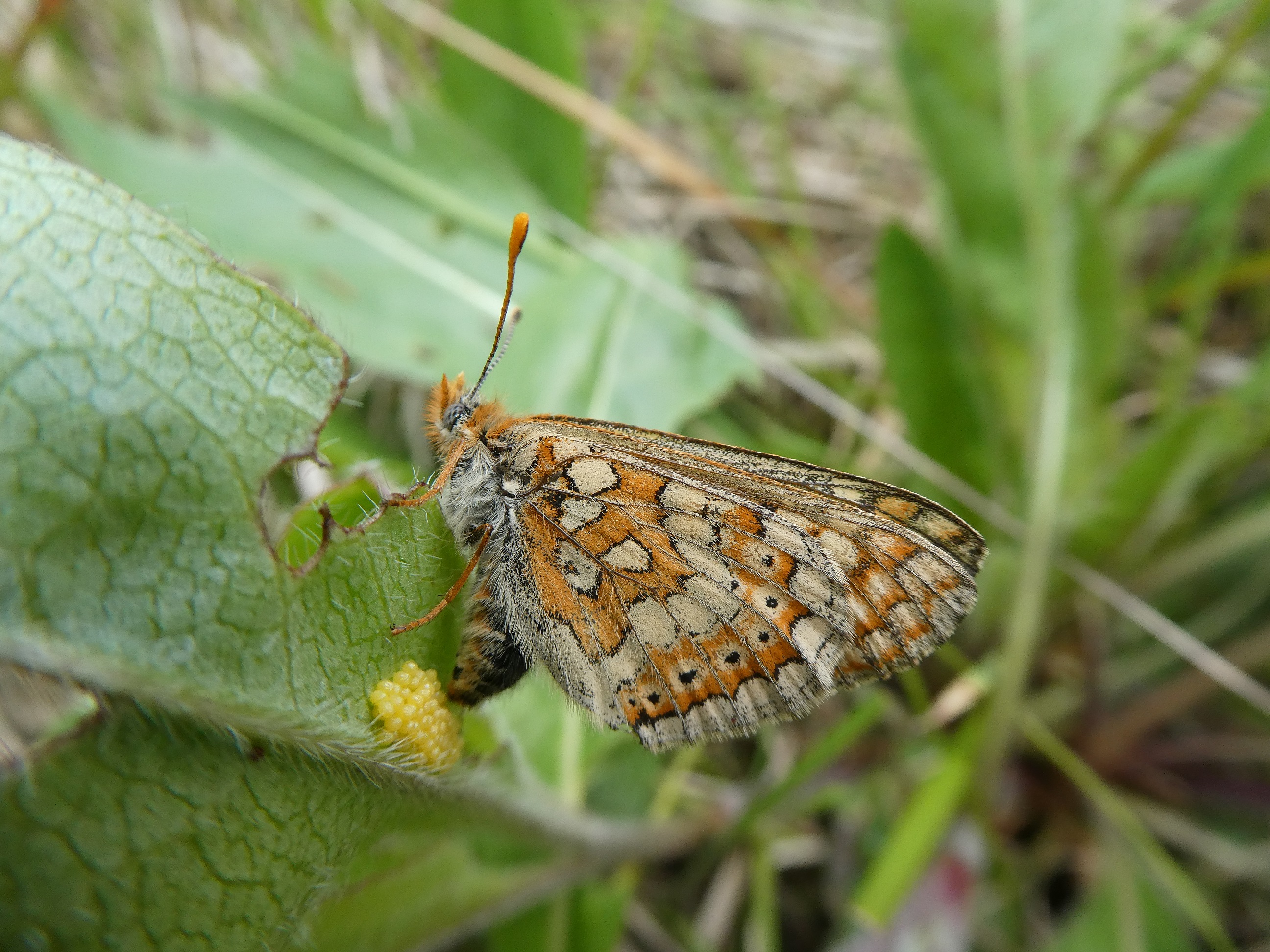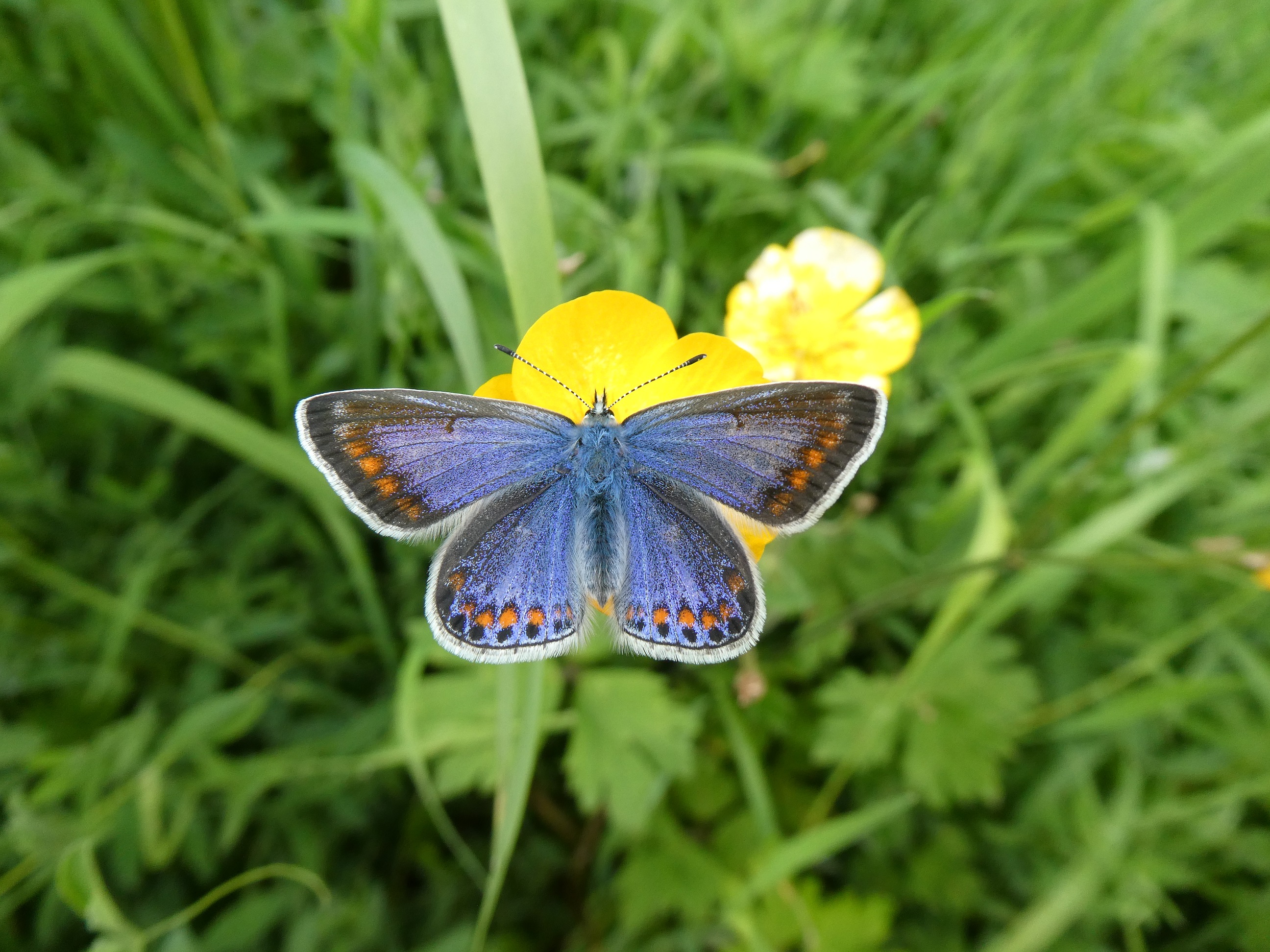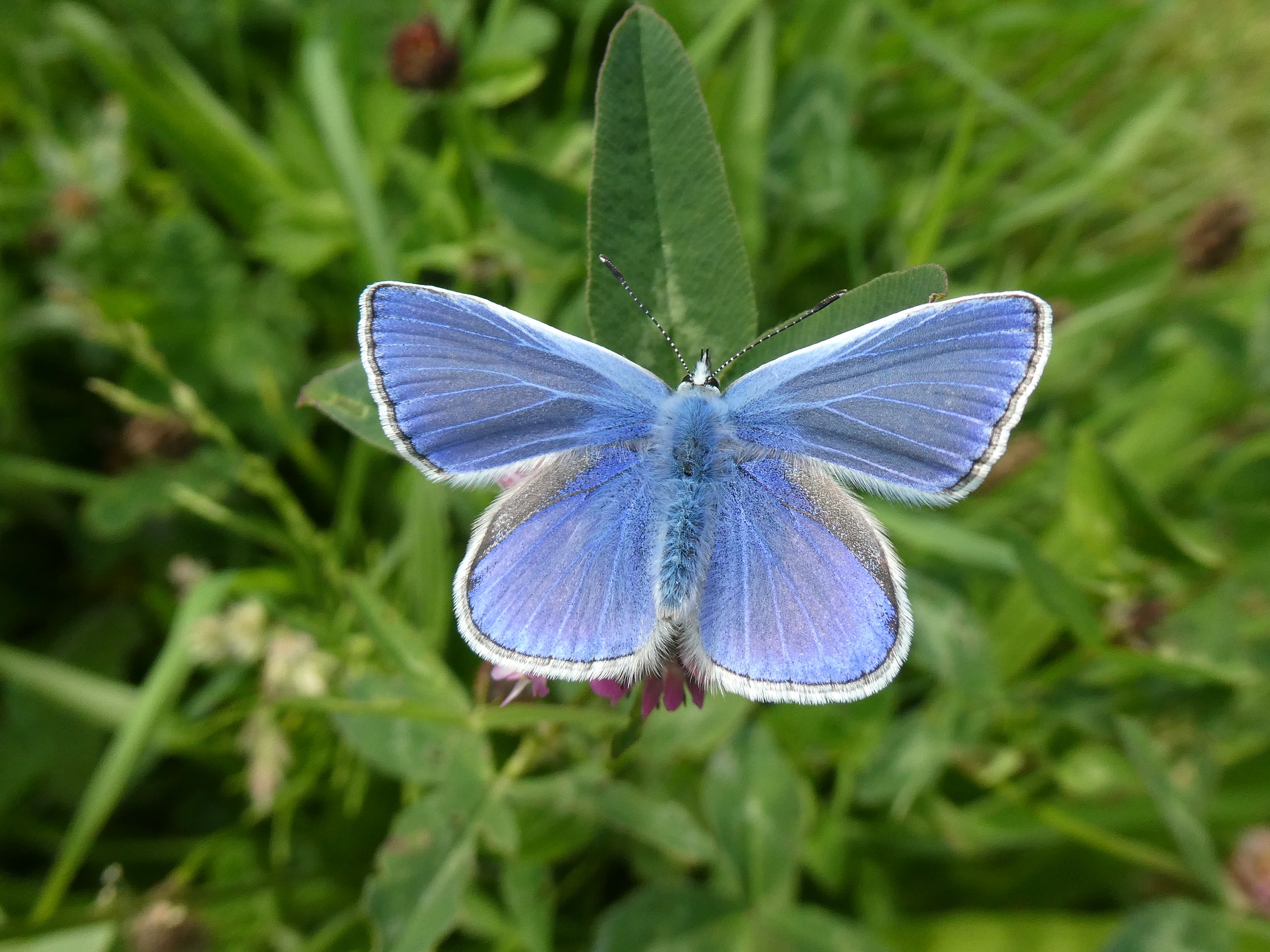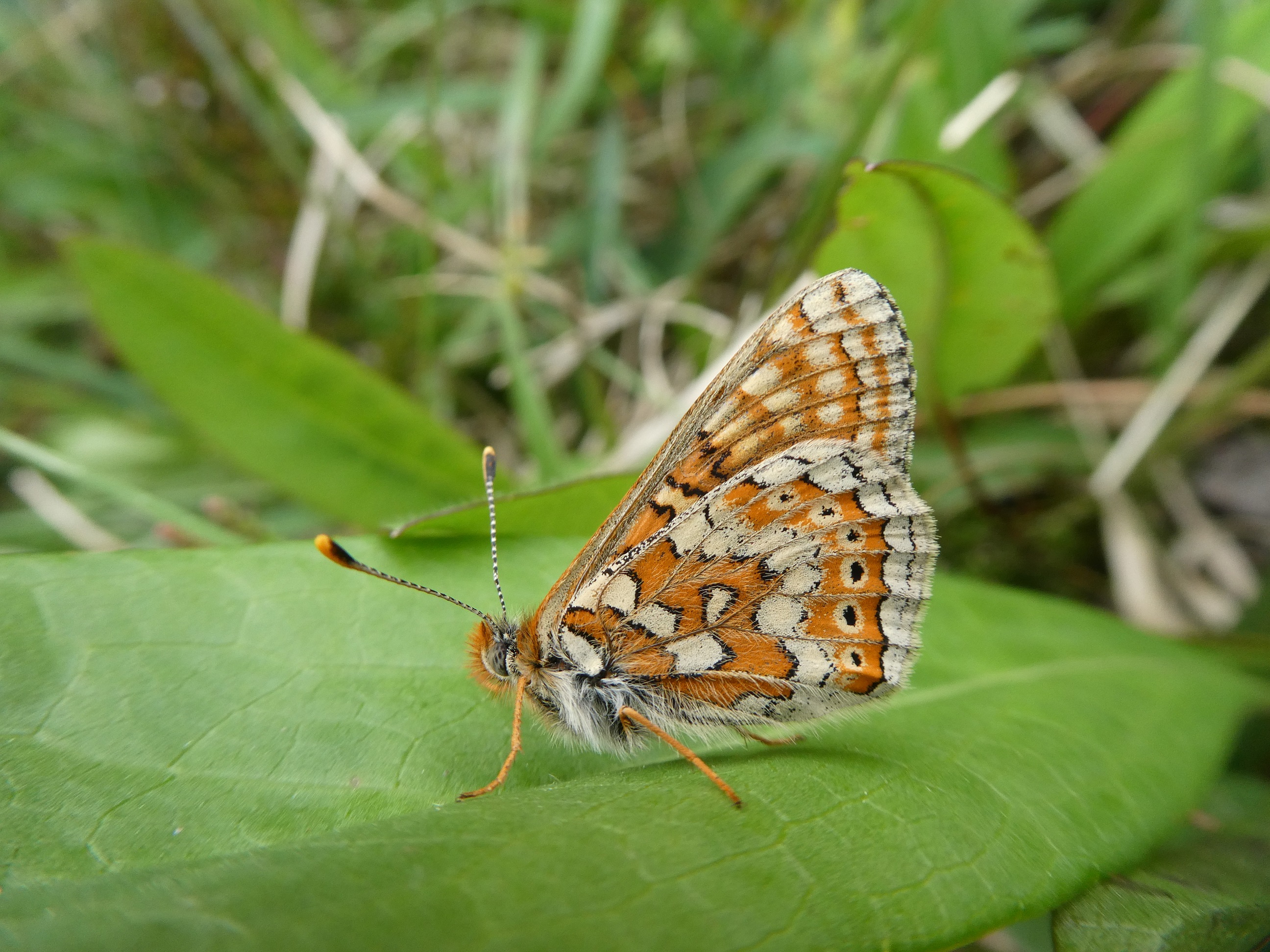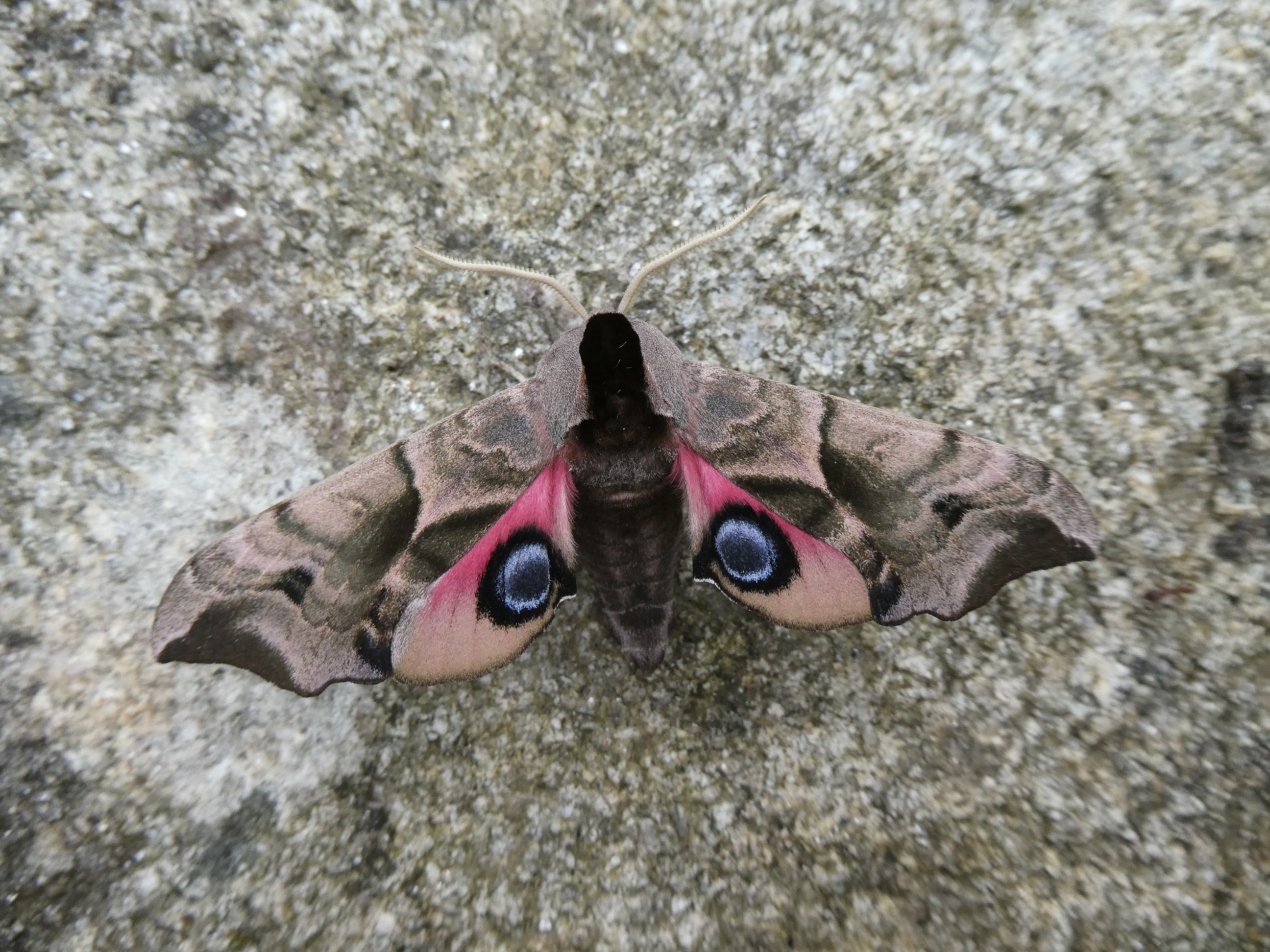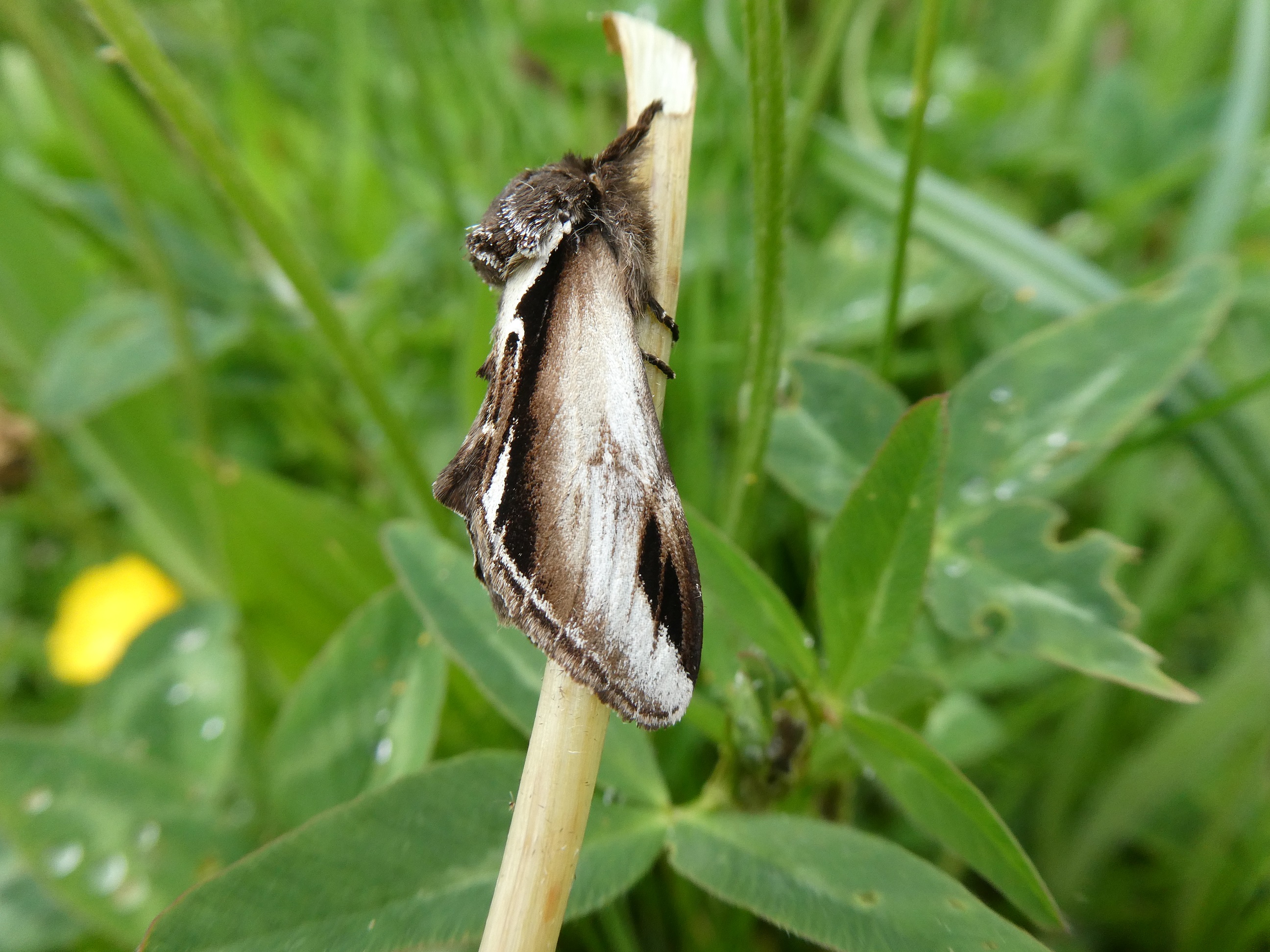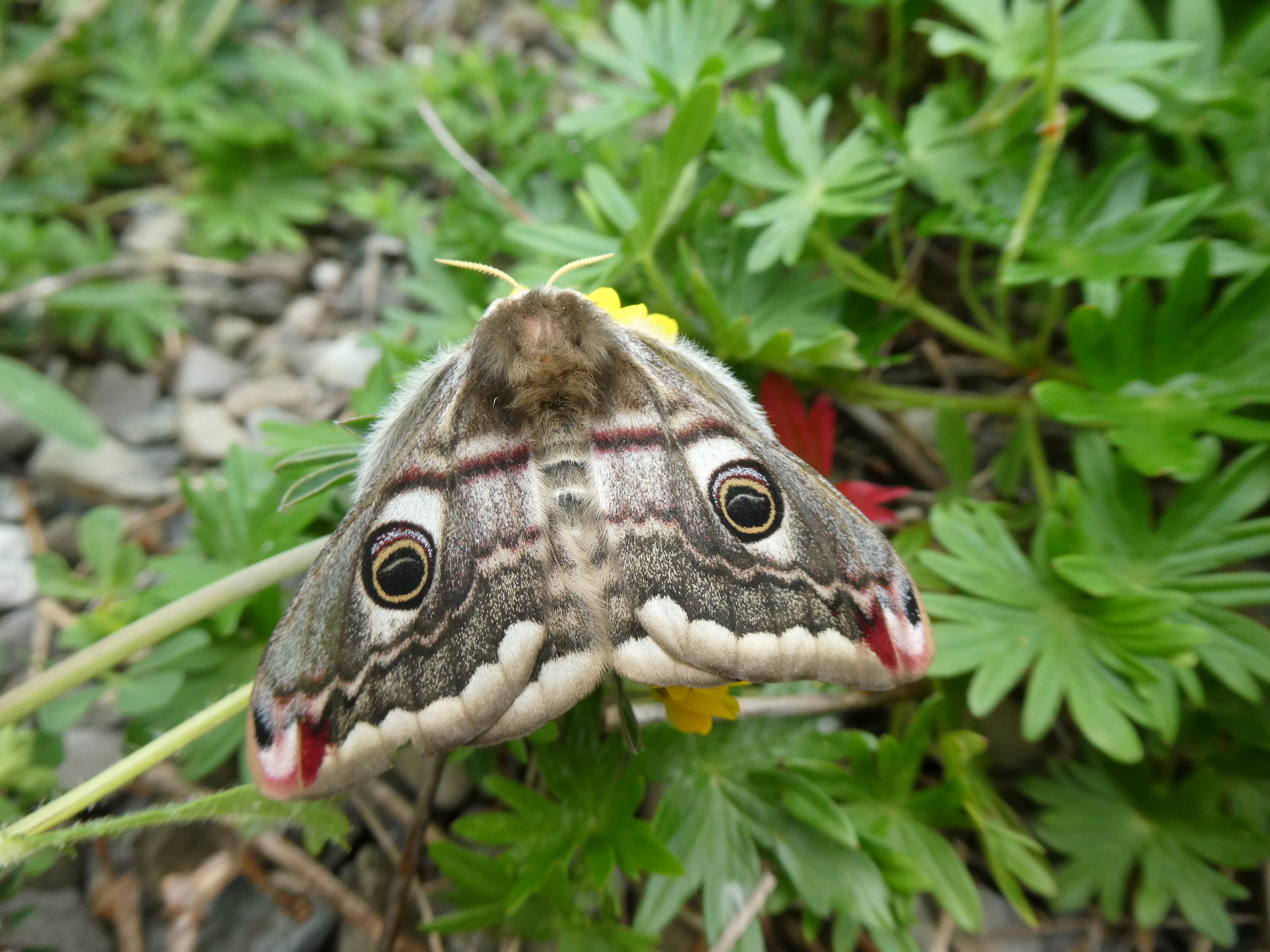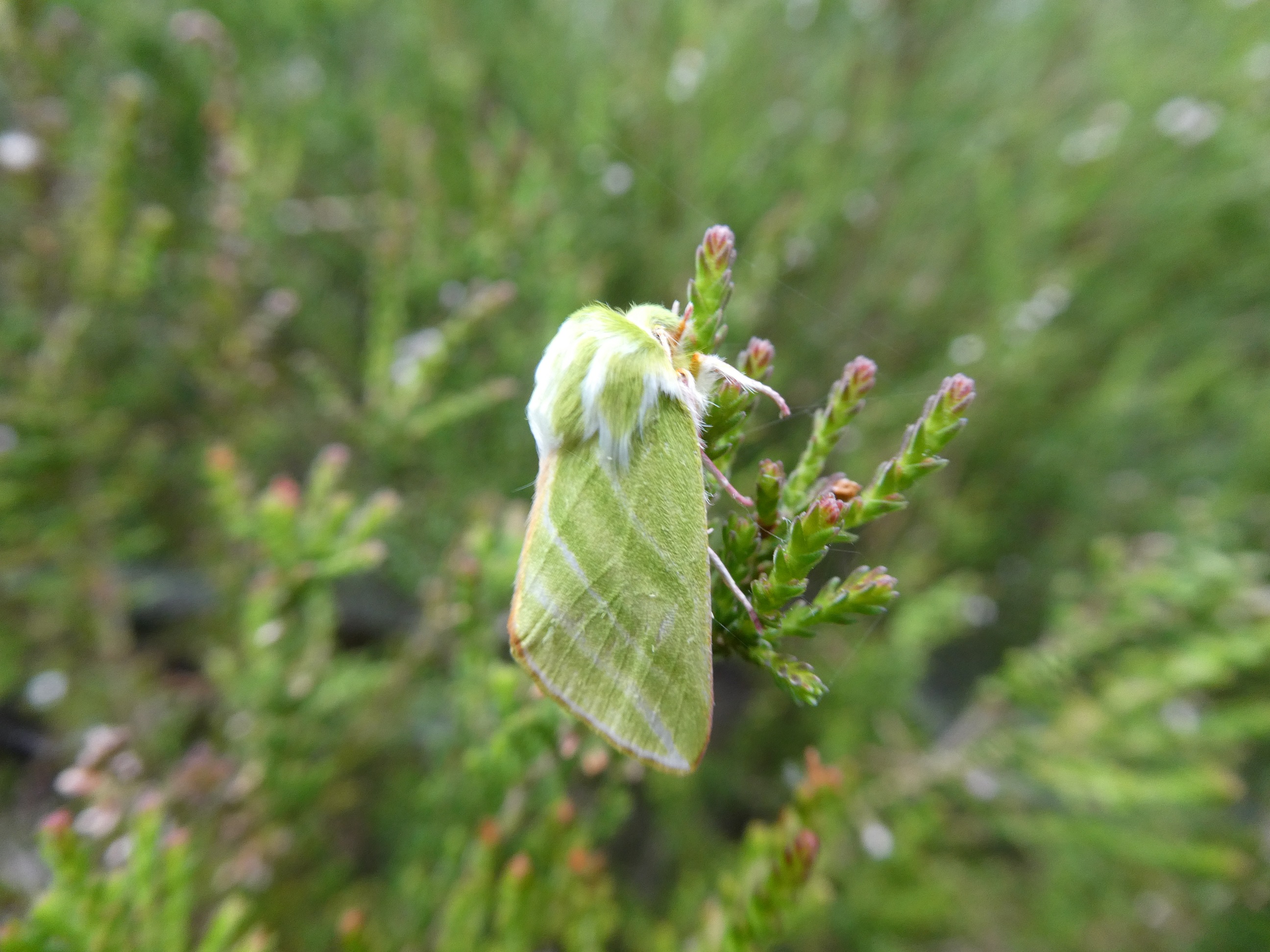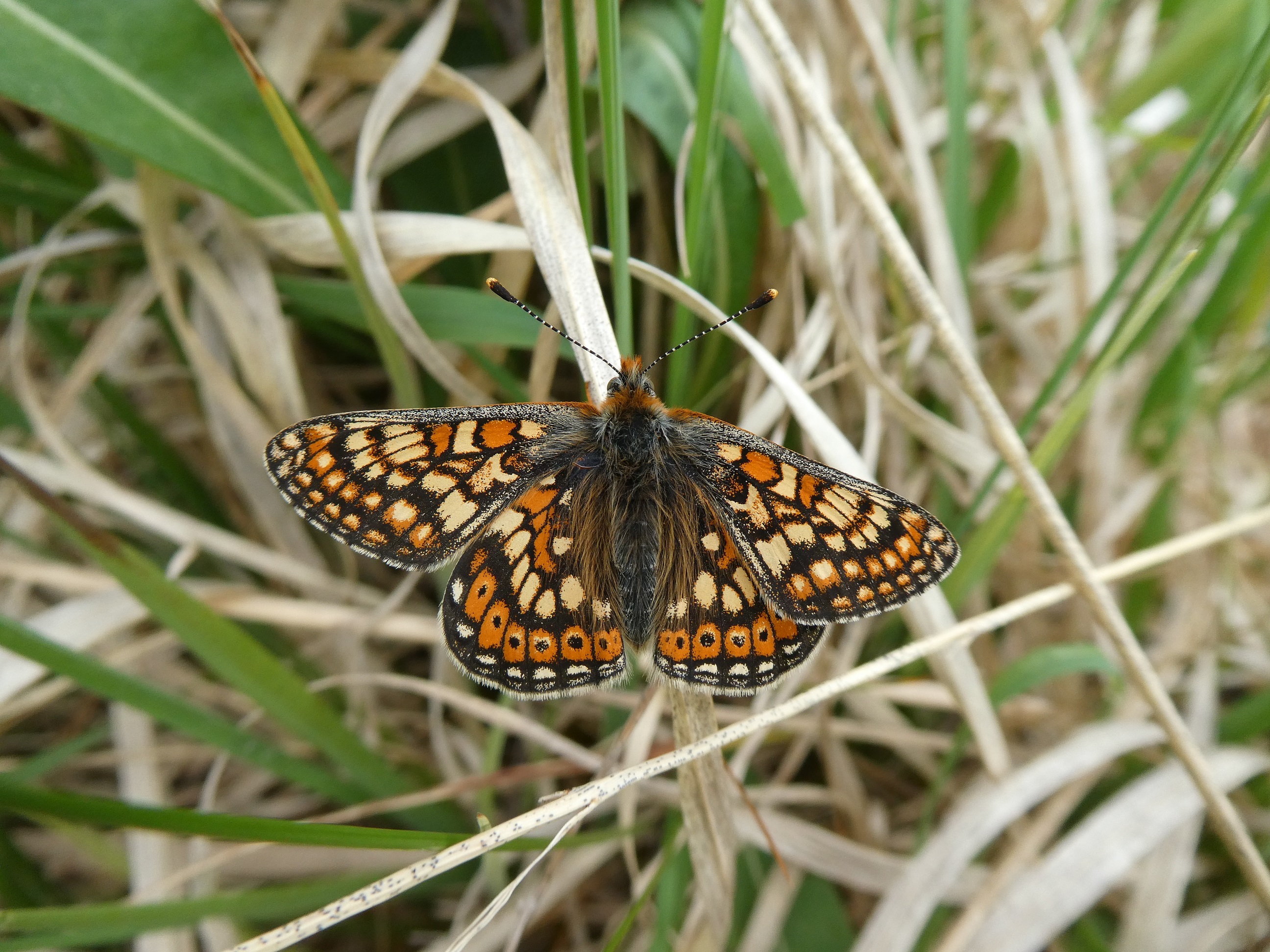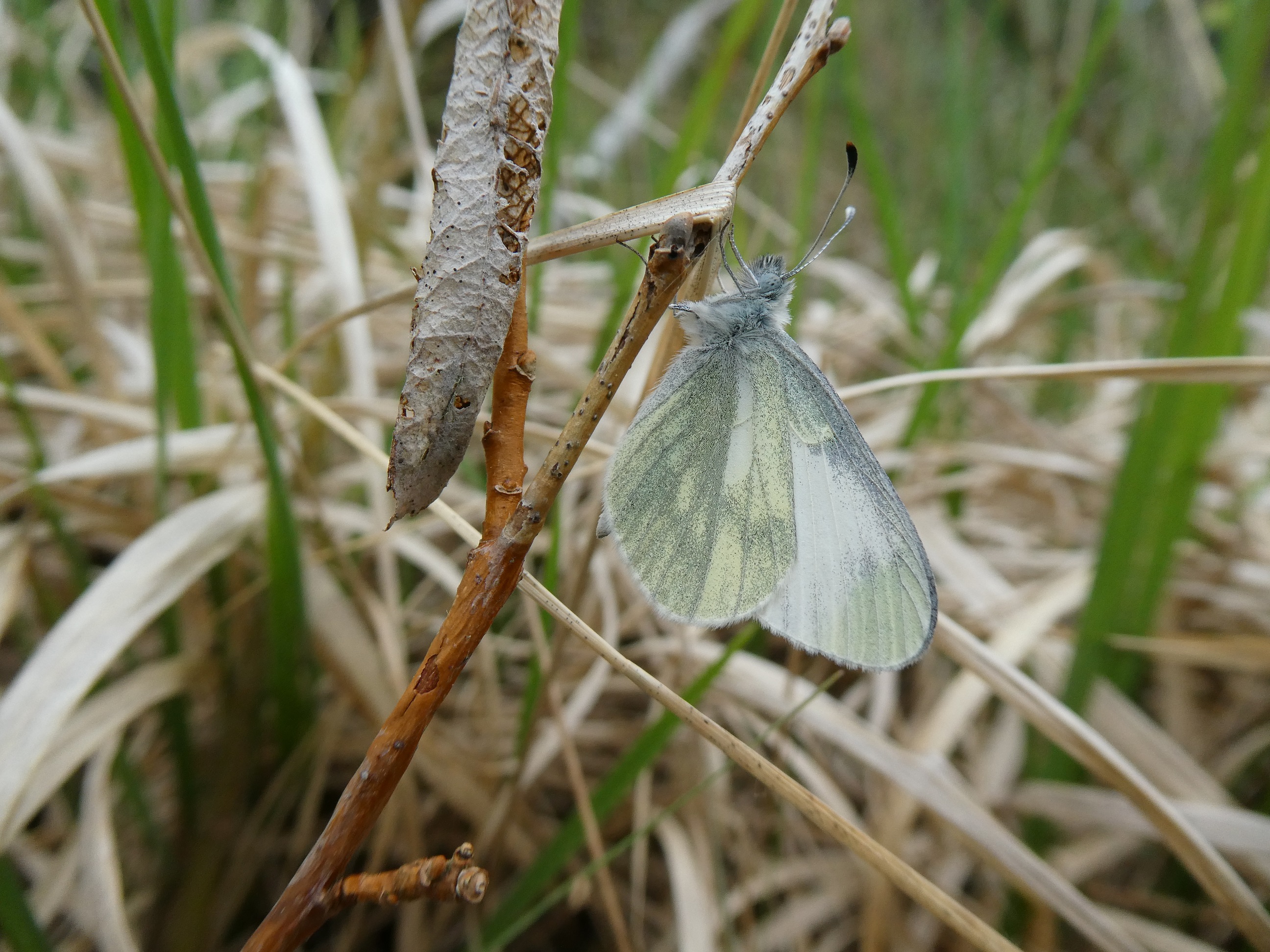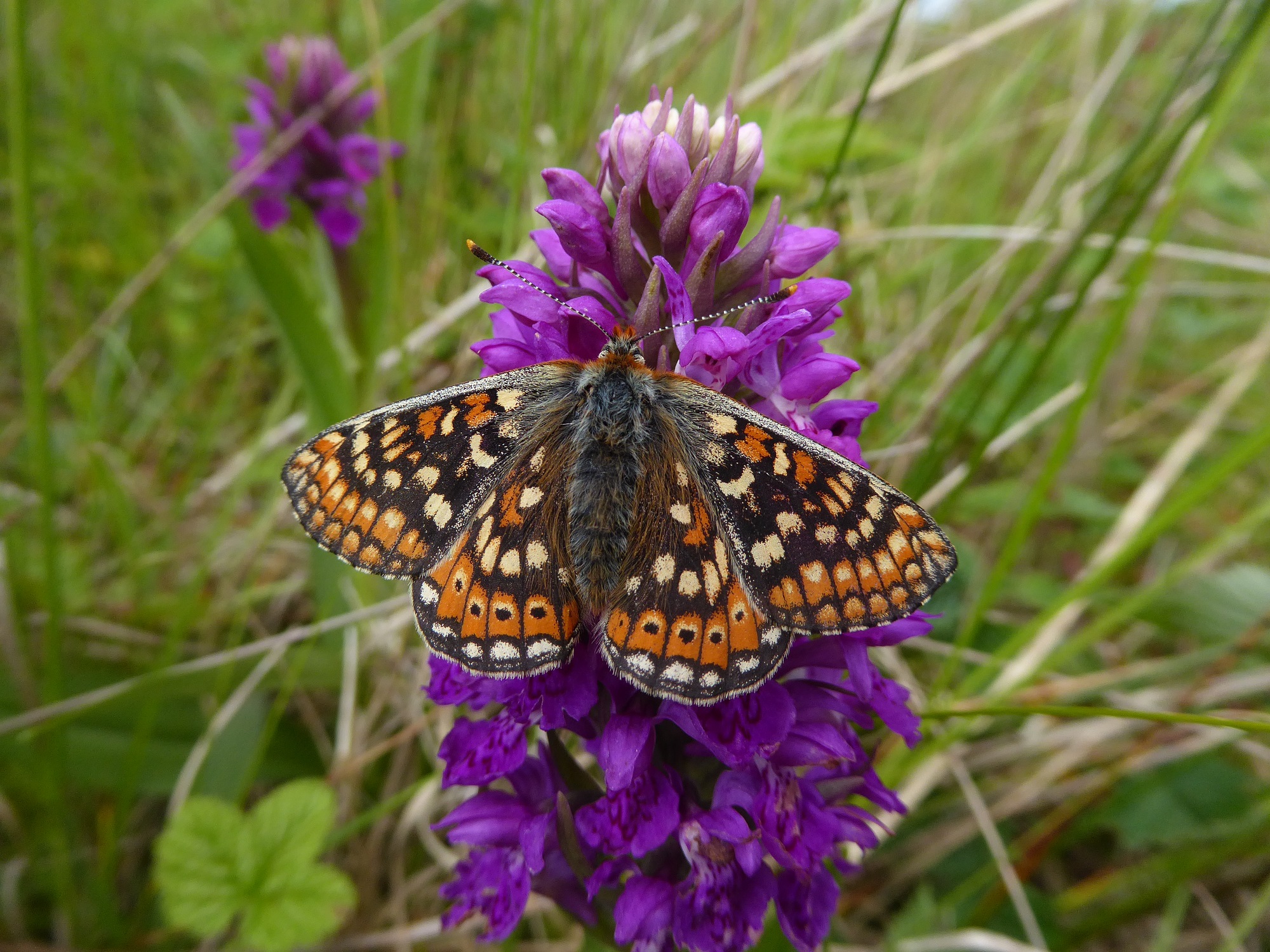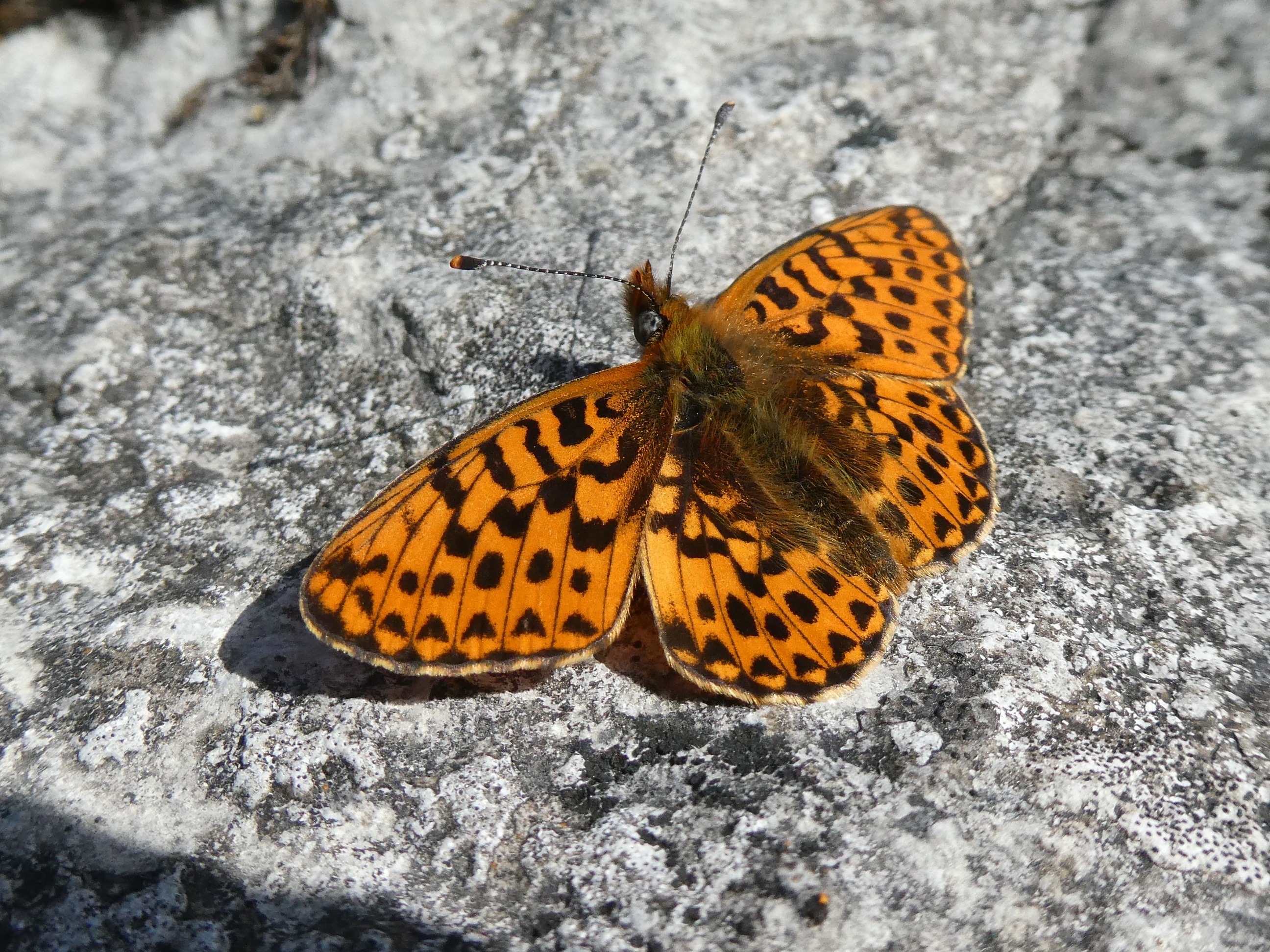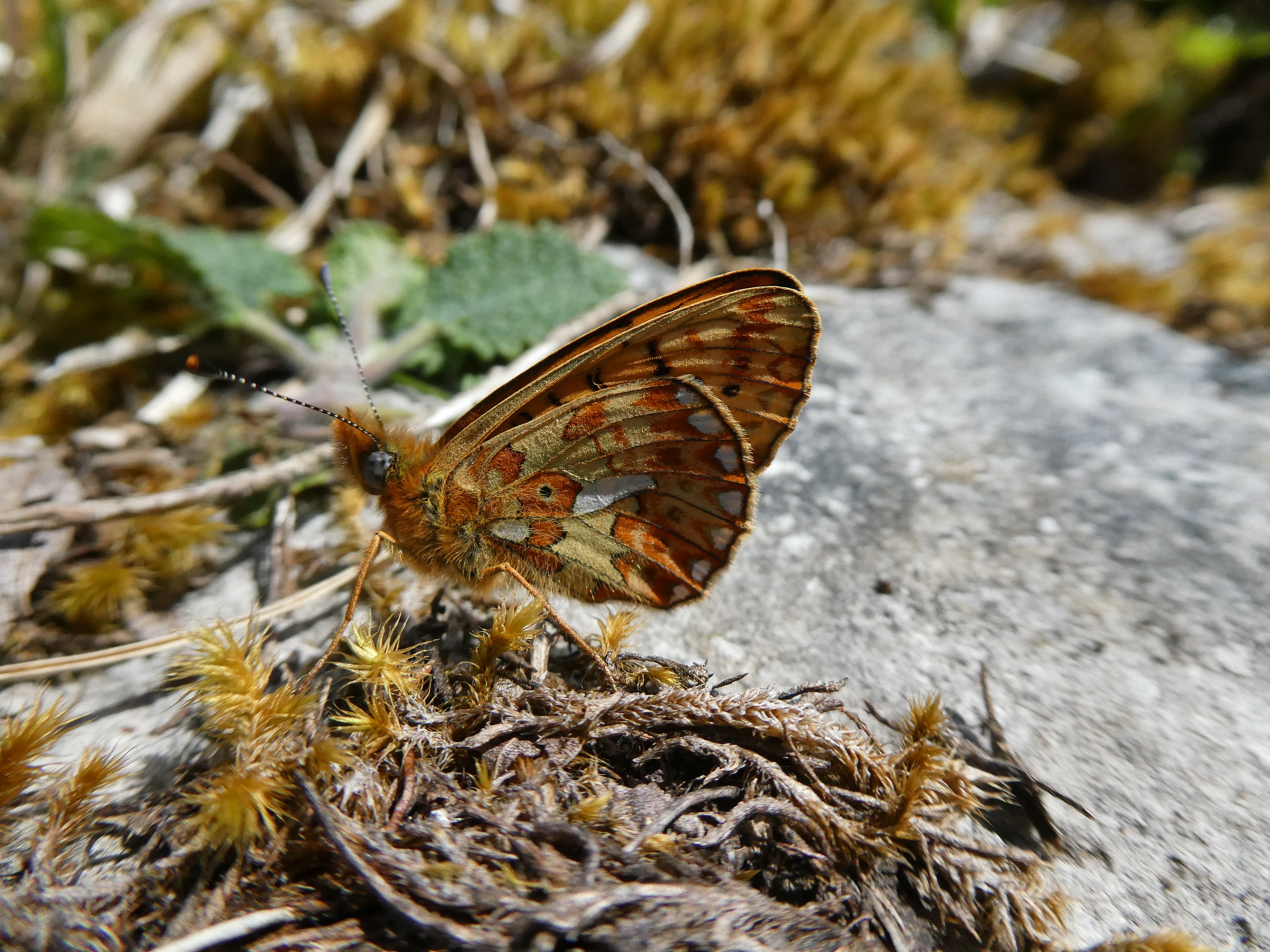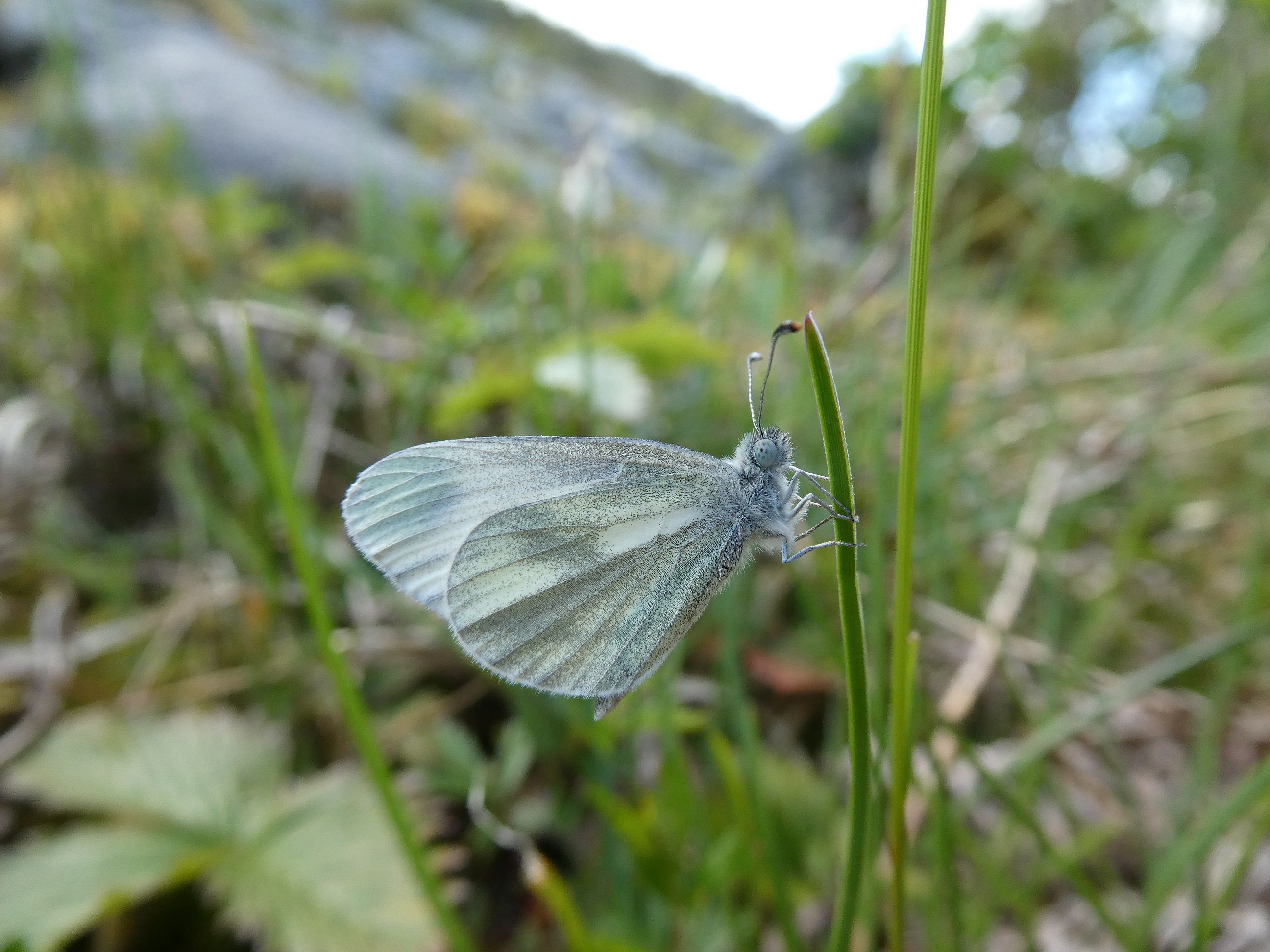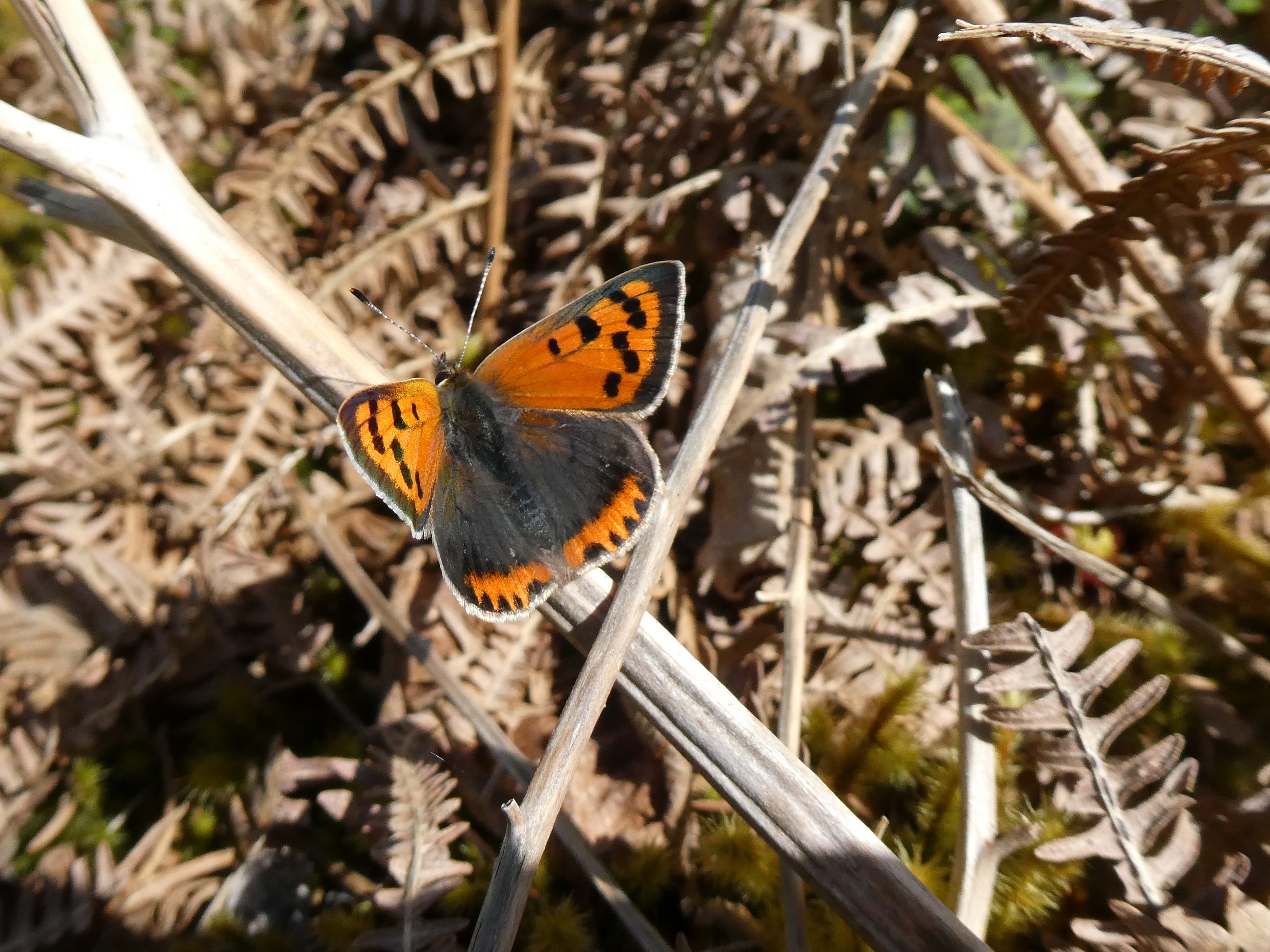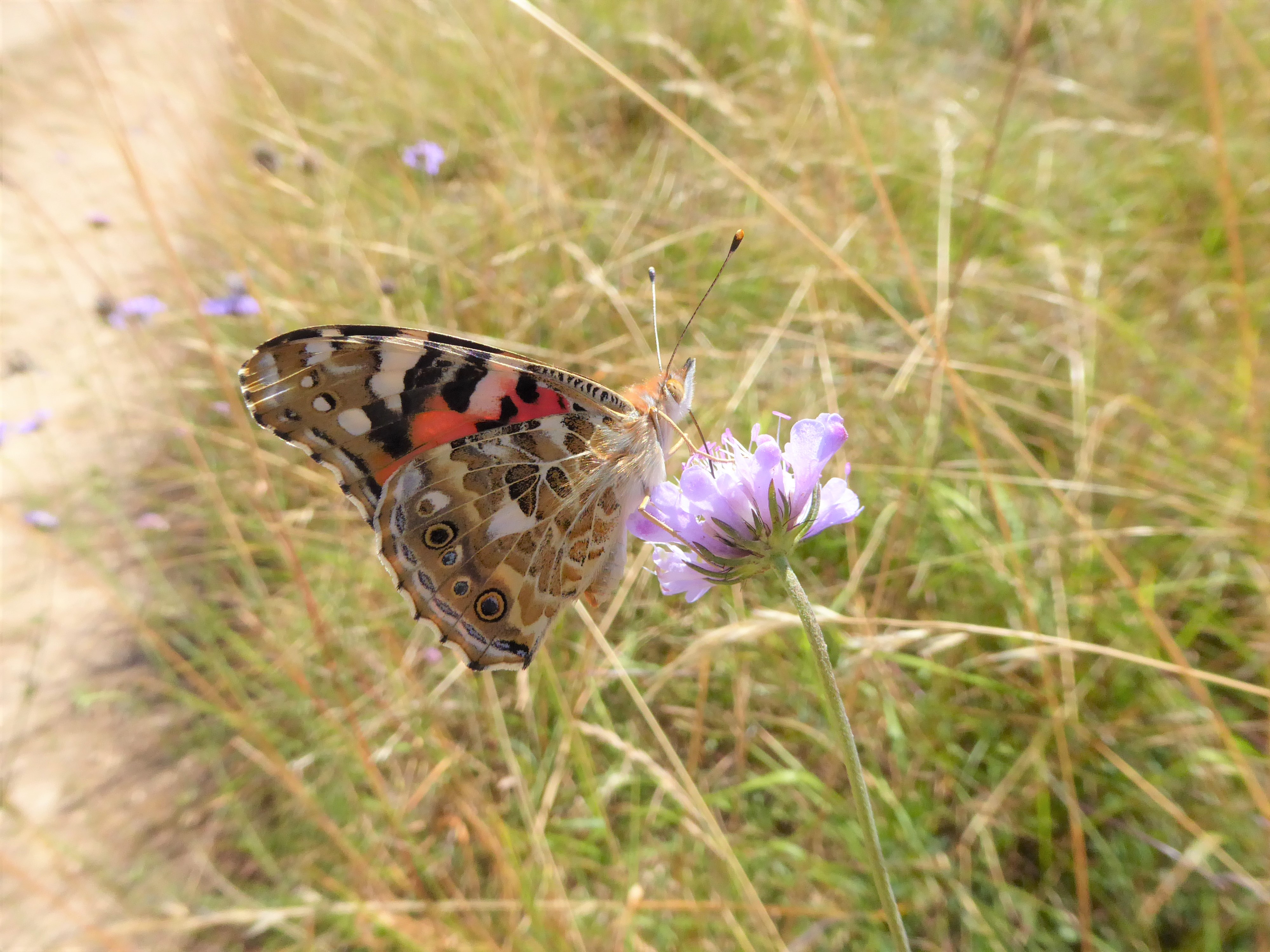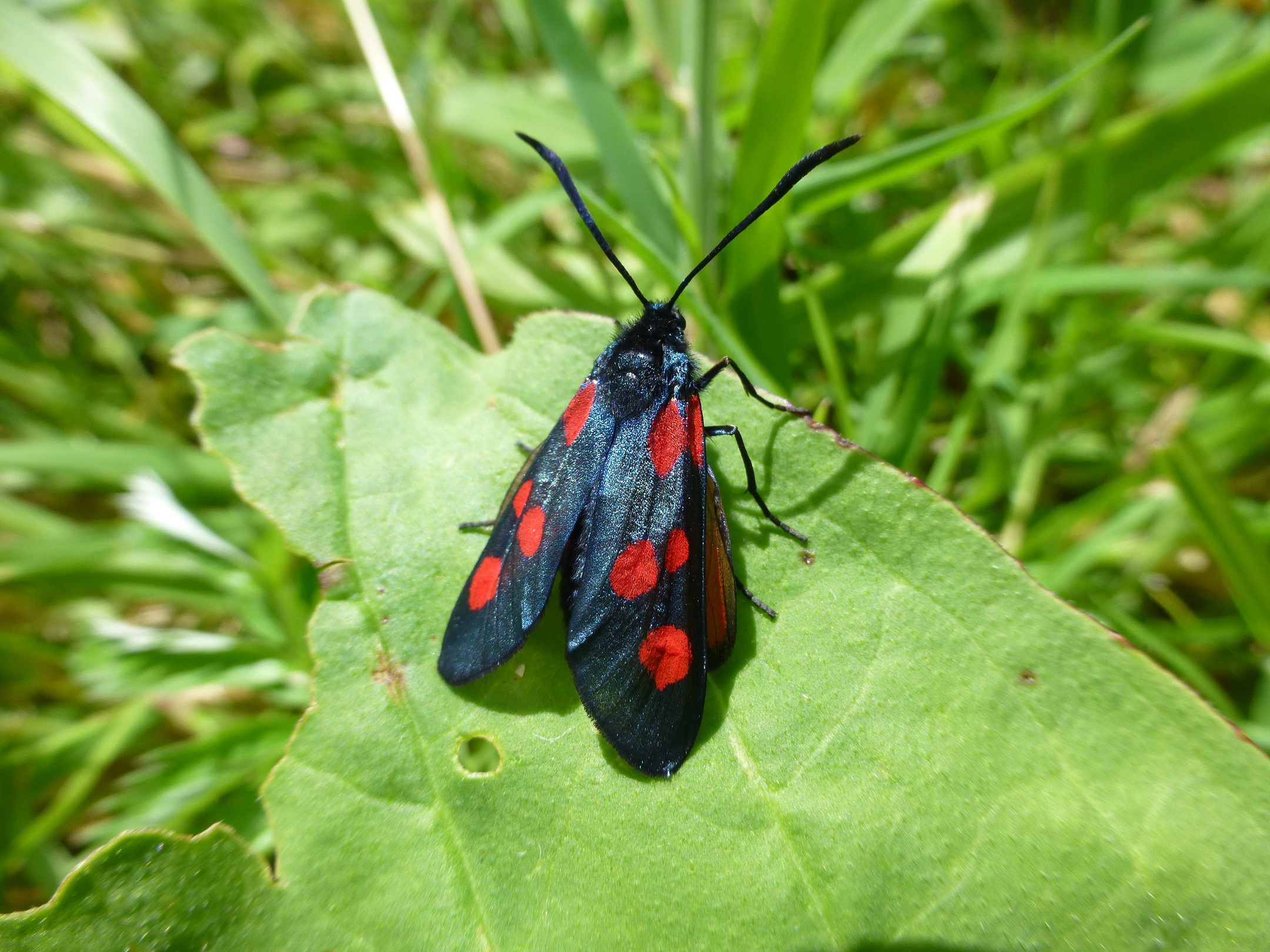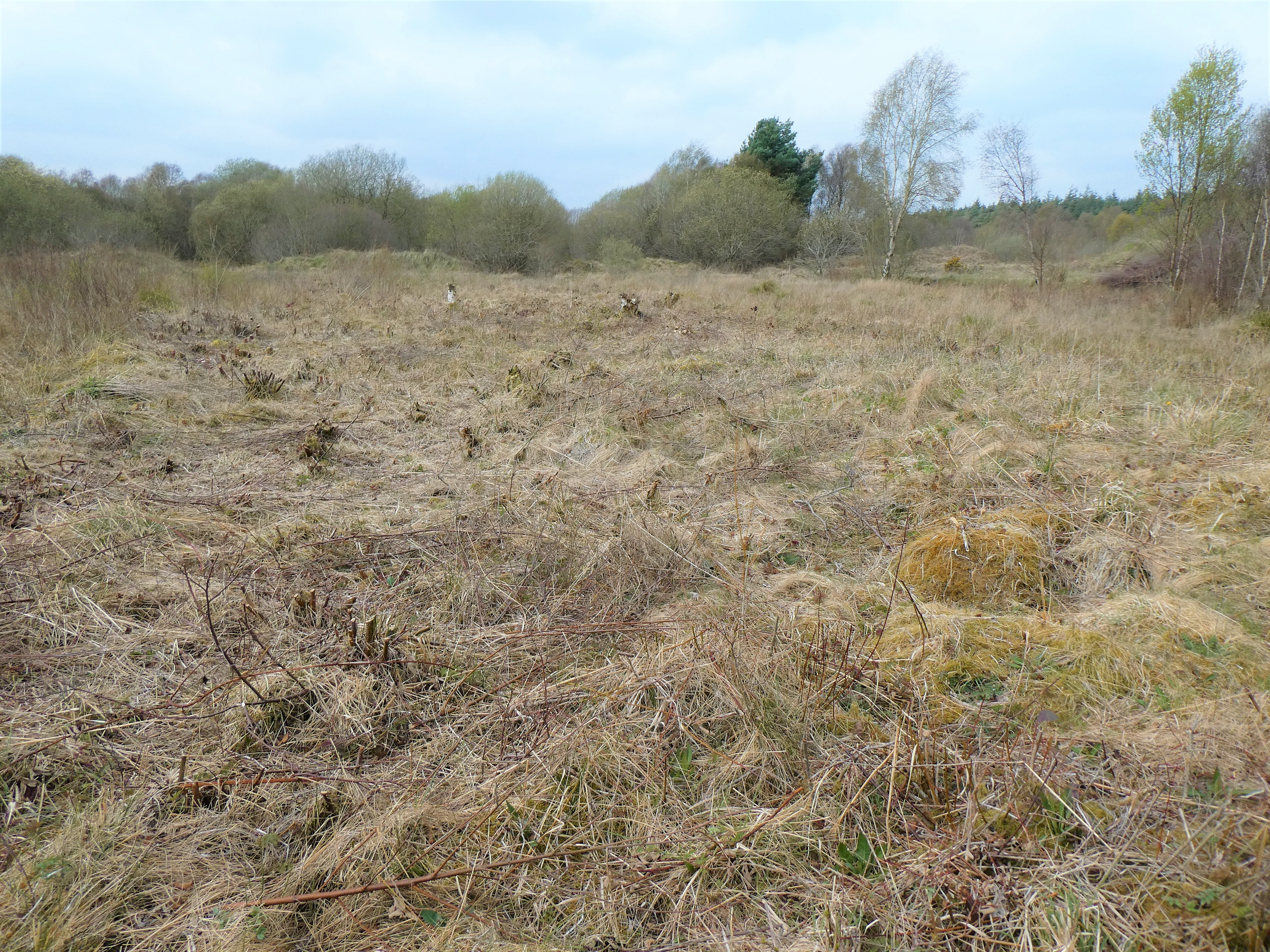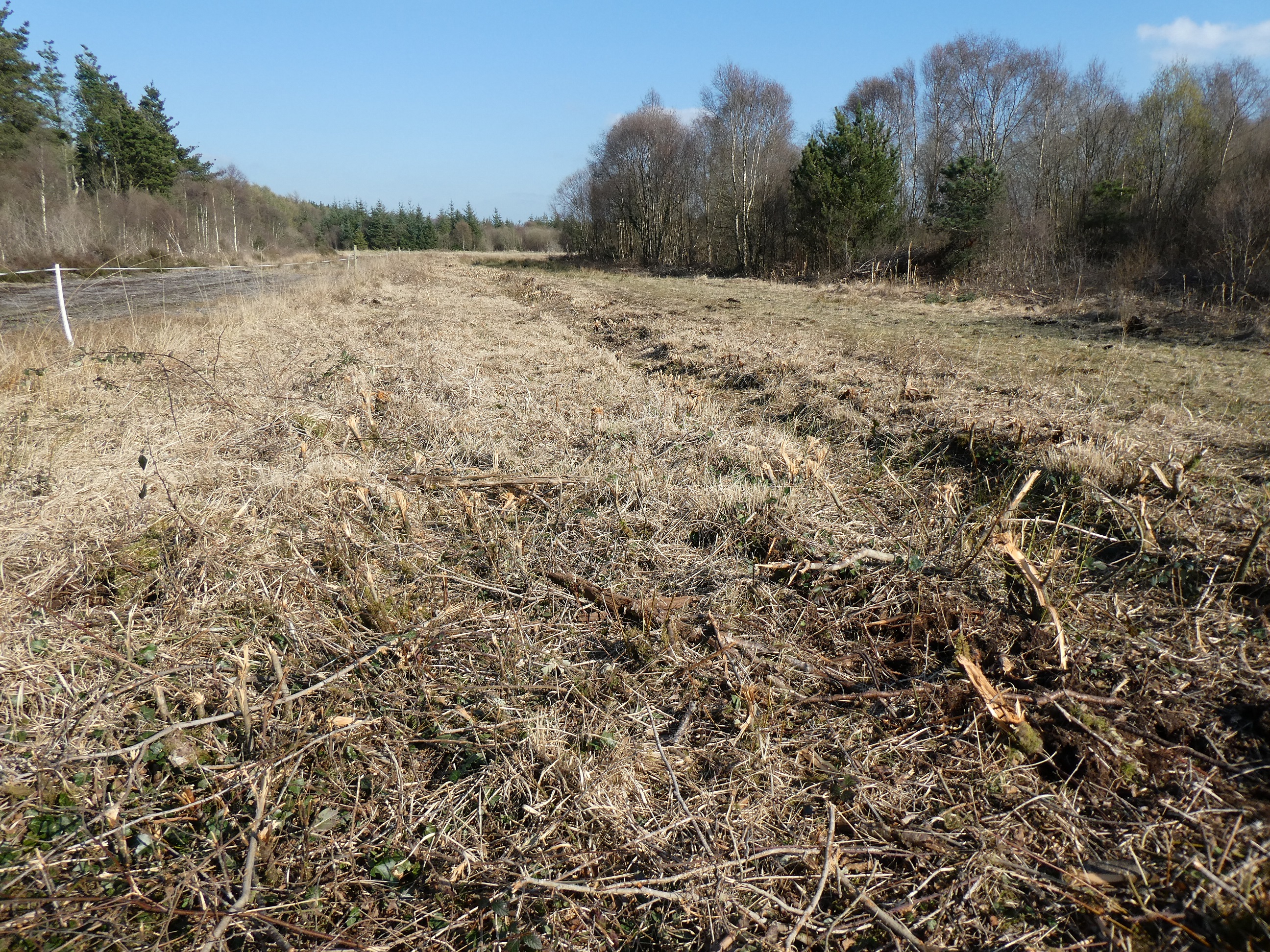As I write this on the grey, rainy Sunday afternoon of June 23rd 2019, a pause to assess the state of the summer so far brings the impression that we are having a really thin time. My impressions are that there are far fewer butterflies out there than we had in June 2018. I have seen less than ten Meadow Browns in my travels, and I have searched sites in a range of habitats and locations-on the Dublin coast (where I drew a blank), in south Wicklow (another blank), Carlow (four), Meath (three) and Kildare (three). But perhaps that is not broadly reflective? To obtain a better impression of how populations are doing, I took four species, Cryptic Wood White, Marsh Fritillary, Meadow Brown and Small Heath, all of which fly during June, to see their abundance levels from June 1st-June 23rd 2019 compared with the same period in 2018.
Cryptic Wood White appears to be on the rise in Ireland. It appears to be everywhere that suitable habitat exists, tall, herb-rich grassy areas with scrub containing any of its larval foodplants. In June 2018, 88 butterflies were notified to the Butterfly Conservation Ireland Records Page. In June 2019 we have received 42 records of this dainty butterfly. It is down by over 52%.
The Marsh Fritillary enjoyed extraordinary abundance in 2018 and used the prolonged heat well by expanding its distribution by occupying new areas. We received records of 698 individuals in 2018 but only 245 this year. This is a drop of 64.8%.
The Meadow Brown is probably Ireland’s most abundant species. From June 1st to June 23rd 2018 72 were reported. This June only 14 were notified. This species is down by over 80%.
Small Heath, a small member of the ‘brown’ family of butterflies appears to have been abundant in 2018 with 260 seen. This year 180 were reported, a fall of 30.7%.
While most of the summer of 2019 lies in the future, the start has not been good for butterflies. On many days temperatures have been too low for activity so that adult butterflies remain hidden. Cool temperatures may mean that larval and pupal stages are prolonged. This prolongation may result in higher losses from predators and diseases. Bad weather, especially rain, kills pupae and may harm other life stages. Good quality habitats buffer species against these challenges. Sub-optimal habitats may be less effective in protecting species from adverse weather, resulting in population decline or loss from such areas, especially of specialists like the Marsh Fritillary.
There are likely to be other factors reducing the numbers being seen. Drought during 2018’s long hot summer damaged larval foodplants especially on open, dry, well-drained habitats like coastal dunes and grassland, dry grassland inland and on limestone and eskers. Butterflies that breed on these habitats are likely to sustain losses resulting in lower abundance in the following years. This was observed at Portrane, County Dublin, in the case of the Small Blue. Significant damage was in evidence at Portrane in June 2018 with much of the Small Blue’s sole foodplant, Kidney Vetch, destroyed by the drought and extreme heat. In June 2018 I saw two females Small Blues at Portrane lay on the same inflorescence at the same time, behaviour I have never seen before. This butterfly takes great care to avoid laying on a flower that holds an egg for the larva is cannibalistic. On that day, I counted over 400 adults. Last week I counted just four. While shifting sand at Portrane may have contributed to the butterfly’s reduction there, it is inevitable that massive foodplant loss played its part.
There is some very positive news for the Small Blue along the Meath coastline. The Small Blue was introduced there in 2014. The individuals that were introduced were taken from Portrane. Now it is thriving in Meath where it has occupied the entire four km of dunes. There the dunes are more stable and better vegetated, less vulnerable to drought. The foodplant was not destroyed on these dunes. More than fifty were counted last week. If the colony at Portrane ever fails, the Meath colony can return the favour!
